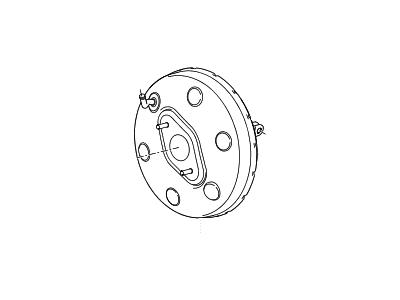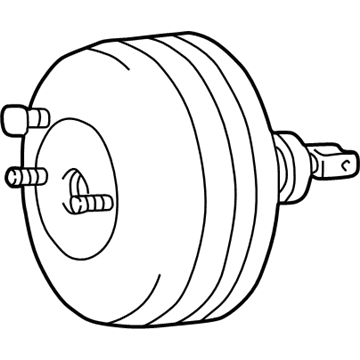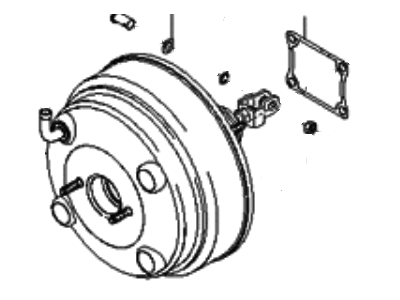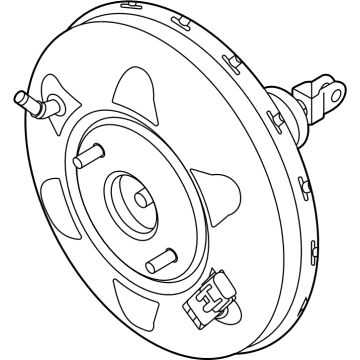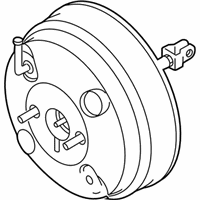×
- Hello
- Login or Register
- Quick Links
- Live Chat
- Track Order
- Parts Availability
- RMA
- Help Center
- Contact Us
- Shop for
- Hyundai Parts
- Hyundai Accessories


My Garage
My Account
Cart
Genuine Hyundai Sonata Brake Booster
Brake Power Booster- Select Vehicle by Model
- Select Vehicle by VIN
Select Vehicle by Model
orMake
Model
Year
Select Vehicle by VIN
For the most accurate results, select vehicle by your VIN (Vehicle Identification Number).
22 Brake Boosters found
Hyundai Sonata Booster Assembly-Vacuum
Part Number: 59110-C1300$571.14 MSRP: $809.48You Save: $238.34 (30%)Ships in 1-3 Business DaysHyundai Sonata Booster Assembly-Brake
Part Number: 59110-38007$754.76 MSRP: $1079.21You Save: $324.45 (31%)Ships in 1-3 Business DaysHyundai Sonata Booster Assembly-Brake
Part Number: 59110-3D020$768.75 MSRP: $1099.23You Save: $330.48 (31%)Ships in 1-3 Business DaysHyundai Sonata Booster Assembly-Brake
Part Number: 59110-38006$100.53 MSRP: $141.24You Save: $40.71 (29%)Ships in 1-3 Business DaysHyundai Sonata Booster Assembly-Vacuum
Part Number: 59110-C1050$475.96 MSRP: $674.58You Save: $198.62 (30%)Ships in 1-3 Business DaysHyundai Sonata Booster Assembly-Vacuum
Part Number: 59110-C1400$475.96 MSRP: $674.58You Save: $198.62 (30%)Ships in 1-3 Business DaysHyundai Sonata Booster Assembly-Vacuum
Part Number: 59110-C1450$475.96 MSRP: $674.58You Save: $198.62 (30%)Ships in 1-3 Business DaysHyundai Sonata Booster Assembly-Brake
Part Number: 59110-3K200$506.31 MSRP: $717.60You Save: $211.29 (30%)Ships in 1-3 Business DaysHyundai Sonata Booster Assembly-Brake
Part Number: 59110-3K201$506.31 MSRP: $717.60You Save: $211.29 (30%)Ships in 1-3 Business DaysHyundai Sonata Booster Assembly-Brake
Part Number: 59110-3K401$506.31 MSRP: $717.60You Save: $211.29 (30%)Ships in 1-3 Business DaysHyundai Sonata Booster Assembly-Brake
Part Number: 59110-3K400$617.23 MSRP: $874.81You Save: $257.58 (30%)Ships in 1-3 Business DaysHyundai Sonata Booster Assembly-Brake
Part Number: 59110-34000$640.10 MSRP: $907.23You Save: $267.13 (30%)Ships in 1-3 Business DaysHyundai Sonata Booster Assembly-Brake
Part Number: 59110-34010$640.10 MSRP: $907.23You Save: $267.13 (30%)Ships in 1-3 Business DaysHyundai Sonata Booster Assembly-Brake
Part Number: 59110-34200$640.10 MSRP: $907.23You Save: $267.13 (30%)Ships in 1-3 Business DaysHyundai Sonata Booster Assembly-Brake
Part Number: 59110-3K300$652.95 MSRP: $925.44You Save: $272.49 (30%)Ships in 1-3 Business DaysHyundai Sonata Booster Assembly-Brake
Part Number: 59110-33201$747.10 MSRP: $1068.26You Save: $321.16 (31%)Ships in 1-3 Business DaysHyundai Sonata Booster Assembly-Brake
Part Number: 59110-33300$141.74 MSRP: $189.95You Save: $48.21 (26%)Ships in 1-3 Business DaysHyundai Sonata Booster Assembly-Brake
Part Number: 59110-L0000$344.98 MSRP: $488.95You Save: $143.97 (30%)Ships in 1-3 Business DaysHyundai Sonata Booster Assembly-Brake
Part Number: 59110-L0100$344.98 MSRP: $488.95You Save: $143.97 (30%)Ships in 1-3 Business DaysHyundai Sonata BOOSTER ASSY-BRAKE
Part Number: 59110-L0200$353.34 MSRP: $500.79You Save: $147.45 (30%)Ships in 1-3 Business Days
| Page 1 of 2 |Next >
1-20 of 22 Results
Hyundai Sonata Brake Booster
If you are looking for affordable high-quality OEM Hyundai Sonata Brake Booster, then you have come to the prime place. Our website provides a large amount of genuine Hyundai Sonata Brake Booster at unbeatable prices. All our parts come backed with the manufacturer's warranty.
Hyundai Sonata Brake Booster Parts Questions & Experts Answers
- Q: How to operate checks, airtightness checks, remove, and insatall a power brake booster on Hyundai Sonata?A:To do an operating check, apply the Brake Pedal several without starting the engine and engine off to pocket check if there is any variation on the reserve pedal distance then Start the engine and check if the brake reduces slightly. For the airtightness check, switch on the engine and switch it off after one or two minutes then change the brake pedal gently several times; if the depression decreases each time, the booster is leak proof. With the engine running, push down the brake pedal and shut down the engine with the pedal depressed; if after holding it for 30 seconds there would be no return mark on the pedal, the booster is also airtight. When disconnecting the power brake booster units do not disassemble all the components as they are intricate, and require special instruments to assemble, get new or rebuilt ones. First, one must detach the brake master piston after which, for some models, it will be necessary to completely disconnect Brake Lines crossing in front of the master cylinder. Safely unplug vacuum hose from the brake booster, further, take out the brake pedal return spring at the top of the brake pedal, the clevis pin retaining, and the pin. Fourthly, unlock the four bolts that connected the brake booster to the fire wall and pull out the booster forward till the studs are out of the holes. To install the equipment, it will be done in the reverse manner of the removal process while making sure that the booster mounting nuts have been tightened to the right torque. Some of the procedures include; adjusting the brake pedal height and free play, and bleeding the system if necessary once the master cylinder and brake hoses have been fitted.
Related Hyundai Sonata Parts
Browse by Year
2023 Brake Booster 2022 Brake Booster 2021 Brake Booster 2020 Brake Booster 2019 Brake Booster 2018 Brake Booster 2017 Brake Booster 2016 Brake Booster 2015 Brake Booster 2010 Brake Booster 2009 Brake Booster 2008 Brake Booster 2007 Brake Booster 2006 Brake Booster 2005 Brake Booster 2004 Brake Booster 2003 Brake Booster 2002 Brake Booster 2001 Brake Booster 2000 Brake Booster 1999 Brake Booster 1998 Brake Booster 1997 Brake Booster 1996 Brake Booster 1995 Brake Booster 1994 Brake Booster 1993 Brake Booster 1992 Brake Booster 1991 Brake Booster 1990 Brake Booster 1989 Brake Booster 1988 Brake Booster
